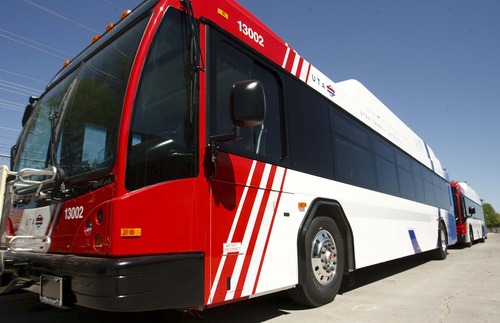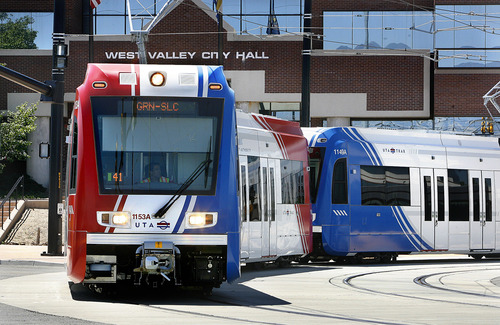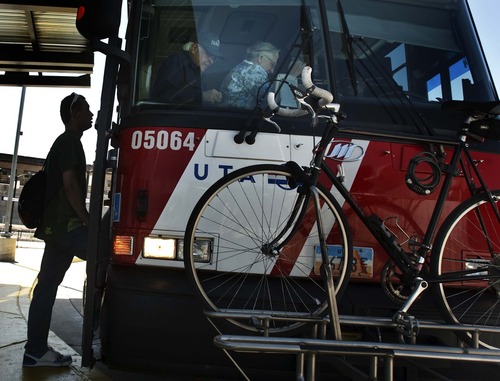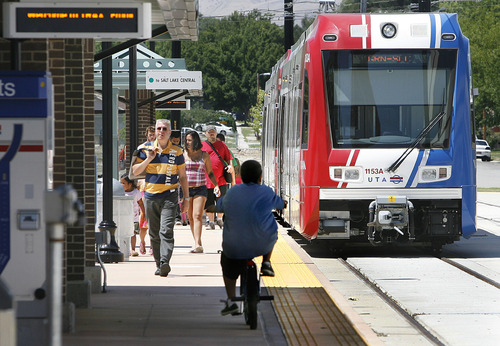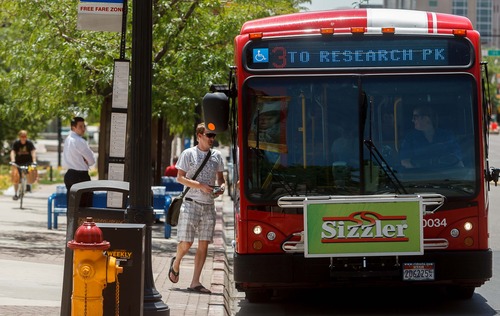This is an archived article that was published on sltrib.com in 2013, and information in the article may be outdated. It is provided only for personal research purposes and may not be reprinted.
Farmington • Utah Transit Authority unveiled a 2014 budget Wednesday that envisions no fare increases next year.
It still would expand rail service operation hours by 16 percent and bus service by 4 percent, additions dependent on increasing ridership and growing sales tax revenue.
The budget also would fund efforts to:
• Switch soon to a system that charges fares based on length of trip, instead of a flat fee for rides of any length;
• Use more buses powered by natural gas; and
• Accelerate payments on debts incurred by building five major rail lines in five years.
A public hearing on the budget is scheduled for Nov. 20 at 2:30 p.m. at UTA headquarters, 669 W. 200 South, in Salt Lake City. The UTA board plans to adopt a final budget in December.
Andrea Packer, UTA communications director, said the new budget does not foresee any fare increases next year.
UTA last raised its fares in April, when a basic one-way fare went from $2.35 to $2.50. The Salt Lake Tribune found then that UTA fares were among the nation's highest — although UTA says they are comparable to transit systems of similar size.
UTA is projecting a $15.7 million increase in revenue — from $309.8 million to $325.5 million. Most comes from sales taxes it projects will increase in an improving economy. UTA also anticipates a 9.6 percent increase in fare revenue from anticipated growth in ridership.
Robert Biles, UTA chief financial officer, earlier explained to board committees that the budget funds a 16.3 percent increase for rail service hours. The boost results from 2014 being the first full year of operation for three new lines — the airport TRAX extension that opened in April, the Draper TRAX extension that opened in August and the Sugar House Streetcar scheduled to open Dec. 8.
A 3.8 percent increase in bus service hours also is projected. UTA is shifting focus from building new rail lines to restoring some bus service cut previously to help fund rail lines. The agency has not detailed where and how expanded bus service will occur.
Biles said the budget has $2 million for switching eventually to a distance-based fare system, such as improving electronic fare collection systems and GPS systems showing where vehicles are (and the length of trips taken).
As UTA looks to use more buses powered by natural gas — a fuel cheaper and less polluting than diesel — the agency is spending $13.5 million for a depot in Salt Lake City where buses refuel and are serviced. It also budgeted $8.87 million to buy 20 more natural gas buses.
Biles said UTA also budgeted $1 million to speed payments on money borrowed to build new rail lines.
A legislative audit last year raised concerns about UTA's debt load and financial projections that auditors found overly optimistic.
The audit said UTA's projections showed that its debt payments will grow from $70.7 million in 2010 to $166 million in 2020 — and will require $4 billion in debt payments over the next 30 years. Heavy debt plus lower sales-tax revenue collections led rating companies to downgrade UTA's bond rating in 2011 to A+, down from AA-. Many Utah governments have a much higher AAA rating.
The budget also includes $2.8 million for continued planning for a new "bus rapid transit" route between Provo and Orem, sort of a TRAX on rubber wheels where buses will have a dedicated lane and the ability to change traffic signals in their favor.
It also has $2.6 million in planning for Wasatch Canyon transportation studies.


